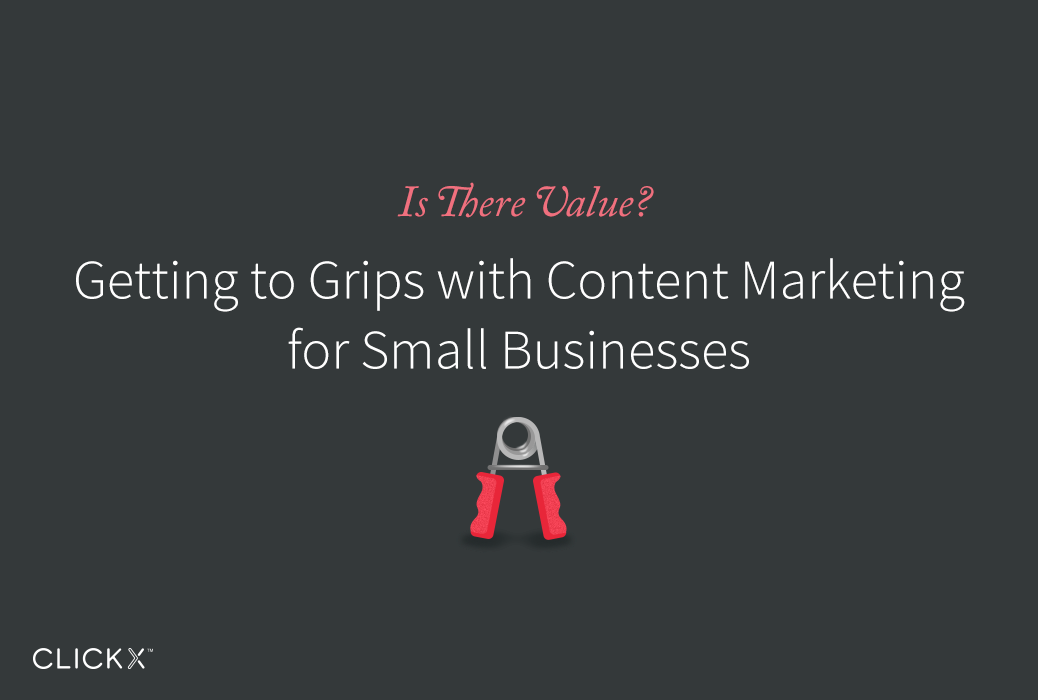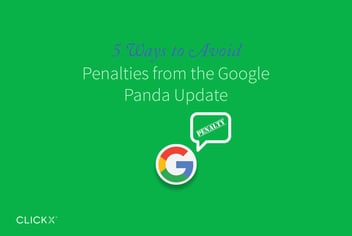Getting to Grips with Content Marketing for Small Businesses
As a small business owner, you have to be constantly on the lookout for new ways to attract customers to your business. You probably already have an SEO strategy and social media strategy in full swing, but what else can you do?
I’m sure you’ve heard the term “content marketing” bandied around more than once, but you might still be unclear about the exact value it can bring to your business. Like SEO in general, it’s an area that’s often accompanied by far too much smoke and mirrors.
In this article, we’ll cut through the cloud of confusion and get you firmly up to speed with what you need to know to put content marketing to work in the context of your small business. We’ll cover why you need it and how to get started.
Let’s get some basics out of the way to begin with.
What Is Content Marketing?
Though it’s the current marketing flavor of the month, content marketing has been around for generations in one form or another.
Put simply, it’s a form of inbound marketing that uses content to relay a message and educate or connect with potential buyers.
It’s a classic means of effectively targeting local customers without giving them the hard sell, and a great way to build a relationship with an audience over the long-term. Done right, it’s hard to beat in terms of return on the dollar when it comes to attracting prospects.
[Tweet “Do I really need content marketing? Getting to grips with #contentmarketing for #smallbiz: http://bit.ly/1WrV076 via @clickxio”]
Do I Really Need Content Marketing?
Regardless of what niche you’re in, the answer is almost certainly “yes”. Content marketing is a wonderful way of killing several birds with one stone and creating a defensible position in the local market.
For starters, content marketing enables you to position yourself as an authority or thought leader in your space. With customers much more likely to make their decision based upon who they trust (as opposed to proximity or price), this is a nice spot to be in.
Content marketing is also a core plank in any well-organized, white-hat SEO strategy. The thing search engines value above almost anything else is killer content, and a solid content marketing strategy will have you pumping out more than enough of that to boost rankings.
Finally, content marketing is a great way of extracting the maximum amount of customer lifetime value out of existing customers. By consistently giving them engaging, educational and relevant material about your offering (aligned to their interests naturally), you’re massively increasing the odds of them giving you more money in the future.
Setting up an Effective Content Marketing Campaign
As with all things in life, content marketing works best when you have a plan to follow. Here are three key steps (plus a bonus!) to get started with knocking it out of the park.
1. Craft Your Why
Don’t just dive in and start writing random blog posts in the hope of everything magically working out for the best. Invest the extra time up front in working out why you’re doing this in the first place.
Sit down and answer the following three questions in depth:
- Who is your core audience? Don’t be afraid of getting hyper-specific here and break this out into customer avatars or user personas where appropriate.
- What kind of content will you be delivering? Resources and budget will be big factors here so start with achievable goals. Blogging is an obvious place to begin and, again, getting as specific as you can is the key.
- What are you trying to help your audience achieve? Great content marketing is about the reader or viewer, not about the business. Get clear on the problems you’re trying to help your future customers solve.
The answers you come up with should inform every single piece of content you create down the line. Consider them the stars you sail by.
2. Crank out the Content
You’ve identified potential content areas and established an overall context in step one, but now it’s time to get super specific (and very productive). Refine your list of potential content pieces down to what can reasonably be achieved in a three month period (this will naturally be an estimate when you start off) and arrange it on an actual calendar in terms of a schedule.
Don’t be afraid to experiment with multiple content types. For instance, your customers could prefer long-form content, shorter pieces, videos, infographics, round-up posts or how-to posts. The list of options is long and you won’t know what truly resonates until you throw something out there – be prepared to adjust as you go.
You’re looking to generate consistently engaging content on a schedule and this needs to be turned into a process. Waiting for inspiration to strike is for amateurs. You’re looking for a well-organized production line of killer material.
Be aware that you don’t necessarily have to be the person producing all this content. Excellent (and affordable) freelance content creators can be found on sites such as Upwork and ProBlogger. Do some research on how best to hire freelance writers and start building a team.
With some resources identified in terms of potential personnel and a rough schedule in mind, start plowing through your initial round of content using an editorial calendar to keep things organized.
3. Promote, Promote, Promote
[Tweet “Regular promotion is at the core of a successful content marketing strategy.”]Hitting the publish button is only step one in a long race when it comes to content marketing. If you’re looking to attract new customers with your efforts, you need to be constantly reaching out to new audiences.
Effective ways to do this include sharing your content on social media, reaching out via email to relevant parties mentioned in your material, syndicating content and leveraging the power of email lists.
Your aim should be to consistently produce high-quality evergreen content so there’s no reason you can’t be promoting it on an ongoing basis.
4. (Bonus) Analyse and Experiment
It’s hard to predict what will really land with your audience when you’re starting off but, over time, you’ll have an increasingly valuable cache of data available to inform your future decisions.
Make sure you’re monitoring the performance of each piece in terms of reach and (crucially) conversions. Both of these can be tracked in enormous detail with Google Analytics.
Once you’ve identified what’s working, double down in that department while leaving a portion of your overall content marketing budget available for future experiments.
[Tweet “Crank out the content. Getting to grips with #contentmarketing for #smallbiz: http://bit.ly/1WrV076 via @clickxio”]
Conclusion
Content marketing doesn’t have to be a dark art or difficult to get right. At its core, it’s simply about putting yourself in the mind of your audience and asking what problem it is they’re trying to solve.
Let’s review our four key areas:
- Understand what you’re fundamentally trying to achieve with your content marketing campaigns.
- Crank out the content on an organized schedule.
- Always be promoting.
- Regularly review your results and never stop experimenting.
Are there any content marketing basics we failed to mention? Or tips and tricks you’d like to share with us? Let us know in the comments below!








